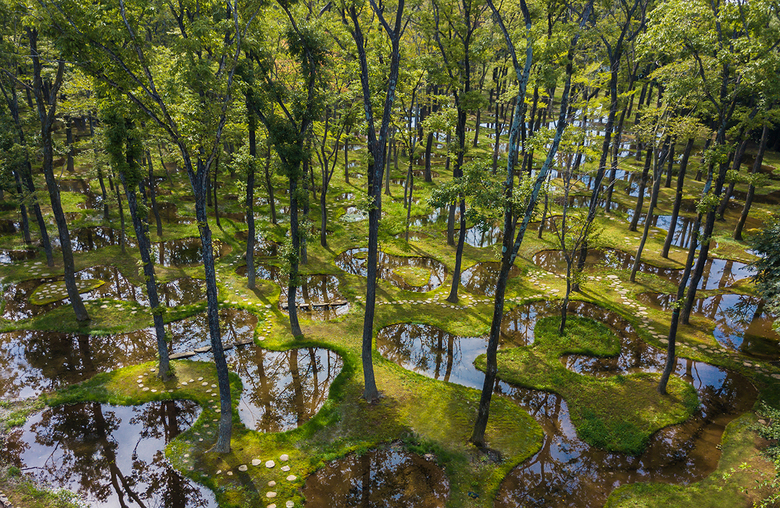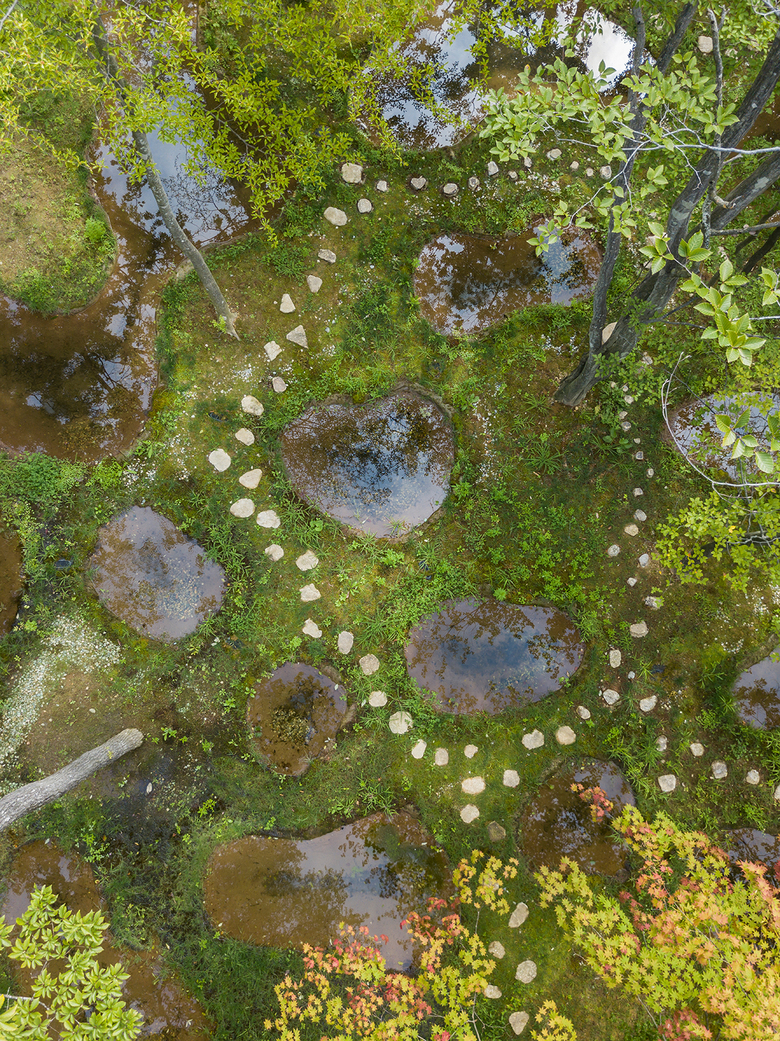Inaugural Obel Award to Junya Ishigami's Water Garden
The Henrik Frode Obel Foundation has announced that the first Obel Award, which comes with a 100,000 Euro prize, goes to Junya Ishigami+Associates' Art Biotop Water Garden, completed in Tochigi, Japan, in 2018.
The Obel Award was created "to honor recent and outstanding architectural contributions to human development all over the world." The award further states, "These contributions should offer seminal solutions to urgent problems." That the inaugural award is going to a garden indicates an openness to architecture beyond buildings. "It can be given to an architect or group of architects," per the Obel Foundation, "and the award-winning project can range from a manifesto to a masterplan and include buildings, landscape projects and exhibitions." The only other criteria is that the work was completed in the last five years.
The Art Biotop Water Garden is part of Art Biotop, an art retreat and artist's residency in the foothills of the Nasu mountains north of Tokyo. The garden — a combination of landscape architecture and land art — entailed replanting more than 300 trees (saved from the construction of a hotel at the retreat) and the creation of 160 biotopes (artificial ponds) amongst them. The effect is like a flooded forest, the water reflecting the canopies overhead. The only other materials are moss between the trees and ponds, and stepping stones for traversing the garden. Like any natural — if highly engineered — creation, the Art Biotop Water Garden changes day to day, season to season.
The jury that selected the inaugural winner of the Obel Award was chaired by landscape architect Martha Schwartz and consisted of Snøhetta co-founder Kjetil Trædal Thorsen, Henning Larsen's Louis Becker, and Dr. Wilhelm Vossenkuhl. Schwartz summed up the project in a statement:
Ishigami is brave. It is his openness to his sensibilities, largess, and respect for the environment which touches me, especially given our present precarious situation. We have consistently undervalued the natural environment at our own peril. Ishigami’s project, for me, is about nostalgia and perhaps an inchoate desire to protect nature, which has for so long been considered ours to be tamed – an obstacle sitting in the way of "progress." Now, the environment is proven to be fragile and in need of protection from ourselves.
With his work, Ishigami opens up a new way of doing architecture by inviting us to trust our inner emotional world, to be ok with exposing our fragility, and to think more freely. Should we not have greater appreciation for the environment and understand our relationship to it? Should we not be braver? More imaginative? I believe that Ishigami’s work is a major contribution to the field of architecture. It is a great inspiration, showing us a better way to build our world.
With its deliberate composition of natural elements, the man-made landscape Art Biotop Water Garden resets the boundaries between architecture, landscape architecture, art, and environmentalism.
The garden is at once a highly artificial landscape, carefully modeled and dependent on technological artifacts, and an undeniably natural and living organism that grows and changes by its own inherent dynamics. In this way, the garden intermingles different time-spaces: a presence of former, existing and future layers of landscapes. But although it is a large-scale and rather invasive project involving, as it does, the relocation of an entire forest tree by tree. Junya Ishigami makes evident what great respect and care for the environment means.
Ishigami’s approach relies in large part on emotions and sensations and is based on the context and the qualities of the landscape. The result is a landscape full of beauty and atmosphere – a highly poetic space that strongly influences the emotions of the visitor.
With the project, Ishigami invites professionals within the fields of architecture and visitors alike to foster a greater appreciation for the environment and to understand our relationship to it, but also to act with imagination, bravery, and respect. The project demonstrates how we can interact with and make our imprint on nature without destroying it. In this sense, the Art Biotop Water Garden is a seminal contribution to the fields of architecture.
Verwandte Artikel
-
-
-
Isabel Zumtobel: 'We Believe in the Power of Design to Change the Future for the Better'
World-Architects Editors | 18.11.2025 -
-




